A DIY window box is fantastic for sprucing up your home and creating a small garden for flowers or herbs at arm’s reach. If you do not know where to start, check out this article for inspiration on handmade window flower boxes.
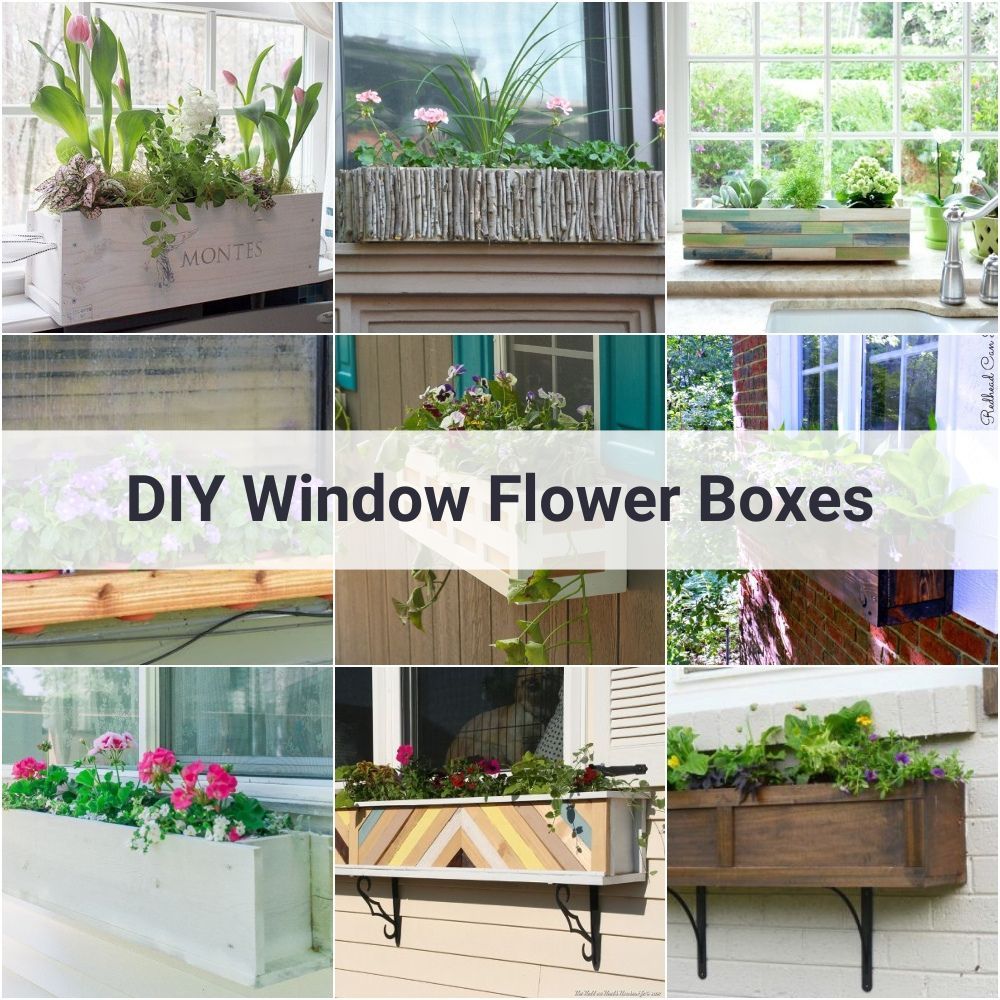
Window boxes provide an outdoor decoration for plant display that blends beauty and practicality. There are two many types of window flower boxes: store-bought and homemade, each with its own advantages and disadvantages. A store-bought window flower box is convenient because it’s already assembled and ready to install. It is available in various styles, sizes, and materials, including wood, plastic, terracotta, or copper. However, a pre-made box can be expensive and does not always fit your window’s exact dimensions or match your home’s aesthetic. On the other hand, building your own DIY window flower box allows for more customization. For instance, you can choose the size, style, and color that best fits your home’s exterior, make the box removable, or install a self-watering system. Building your own box is also a fun and rewarding project for the entire family. On the downside, a DIY window flower box is typically suitable for a single material: wood. It also requires access to power tools like a circular saw unless you order wood boards with the exact measurements you need.
With just a few materials from your local hardware store and a bit of elbow grease, you can craft a unique window flower box in no time. Here is a list of the DIY window flower boxes described in this article:
- DIY removable cedar window box
- DIY removable flowerpot window box
- DIY self-watering flower box
- DIY oversized window box
- DIY extra-deep window box
- DIY mahogany-stained window box
- DIY poplar board window box with black support brackets
- DIY PVC board window box with pipe watering system
- DIY twig window box
- DIY lattice window flower box
- DIY chevron window box
- DIY picket fence window flower box
- DIY pastel wood shim window box
- DIY walnut-stained wood shim window box
- DIY distressed window flower box with L brackets
- DIY hanging flower box with sisal rope
- DIY window box with chalkboard labels
- DIY wine crate window box
- DIY dresser drawer window box
- DIY galvanized tub window box
- DIY aluminum gutter window box for succulents
- DIY tea tin herb garden
- DIY raised pallet planter
Keep reading to discover more information about each DIY window flower box idea. Consult the FAQs section for additional details about what it means to craft your own window box.
1. DIY removable cedar window box

A DIY removable cedar window box can be easily attached and removed from a window, thanks to the addition of cleat hangers. There are several benefits to having a removable window box. Firstly, it allows easy maintenance and cleaning. Secondly, depending on the season, you can switch out multiple removable flower boxes by variety or color. Thirdly, you can bring the flowers inside the house during the cold season. As for the wood type used in building this removable window box, cedar wood is known for its durability and resistance to rotting, making it an excellent choice for outdoor planters. To keep the planter lightweight and ensure proper drainage, fill the bottom with styrofoam. Give the box a sleek finish by applying a coat of deck paint to match your home’s colors.
Visit for more information on building this DIY removable cedar window box.
2. DIY removable flowerpot window box
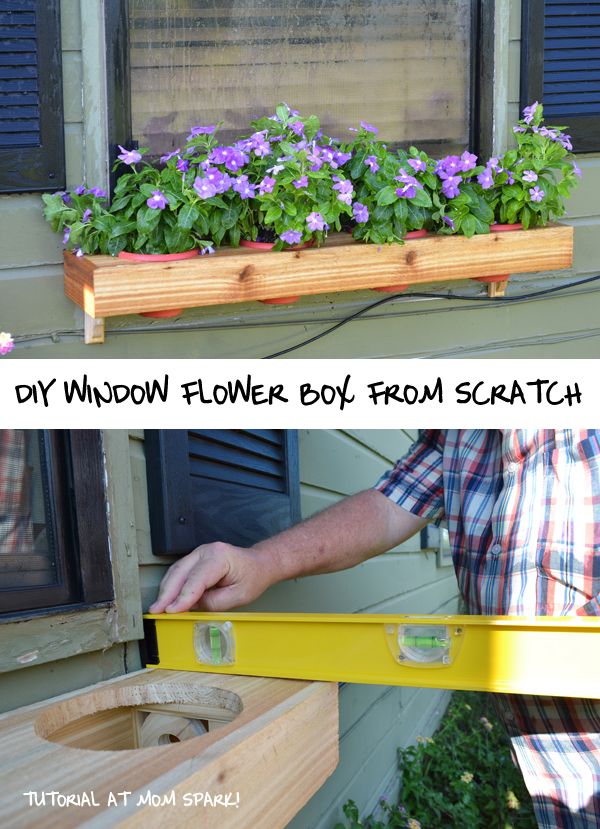
This DIY project is a simple and creative way to craft a removable window box with hole cutouts to hold individual flowerpots. It’s a lovely alternative to the classical window flower box that you must fill with potting mix, as it allows you to easily switch out flowerpots or bring them inside during the cold season without detaching the entire box.
Visit to learn how to craft a removable flowerpot window box using cedar boards and shelf support brackets.
3. DIY self-watering flower box
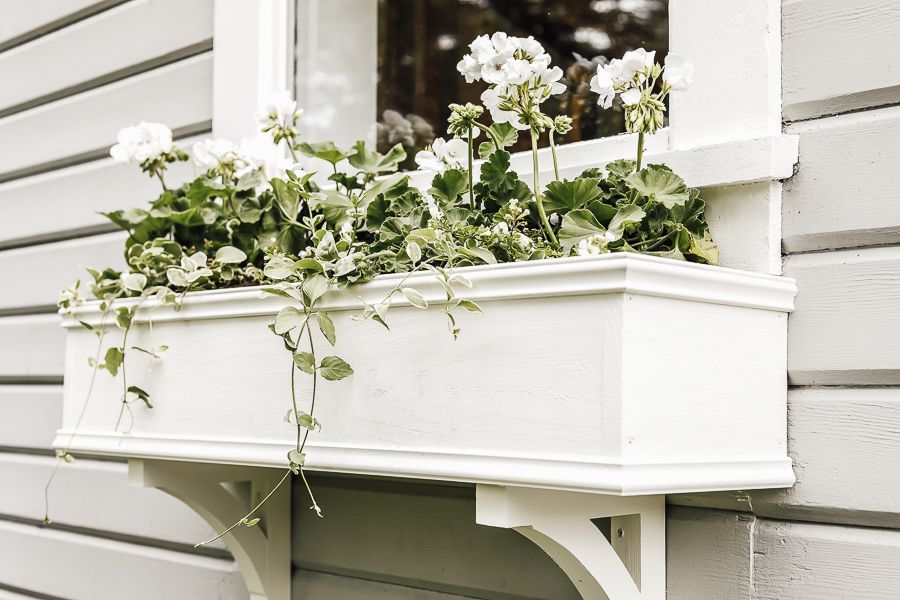
A DIY self-watering flower box is a great way to keep your plants hydrated without constantly watering them. The plants will receive the correct amount of water even when you are away on vacation. A built-in watering system includes a reservoir at the bottom of the box that holds water, which is then wicked up into the soil through capillary action.
Go to to learn how to build a window flower box with a self-watering system for a single pot. It prevents the risk of overwatering, safeguards against soil runoff along the sides of your home, and promotes healthy plant growth by providing water from the bottom up without disturbing the surrounding soil. The watering and drainage system use PVC pipes, small rocks, and heavy mil plastic. Meanwhile, the window box requires cedar boards, trim for the face and sides, and corbels.
4. DIY oversized window box
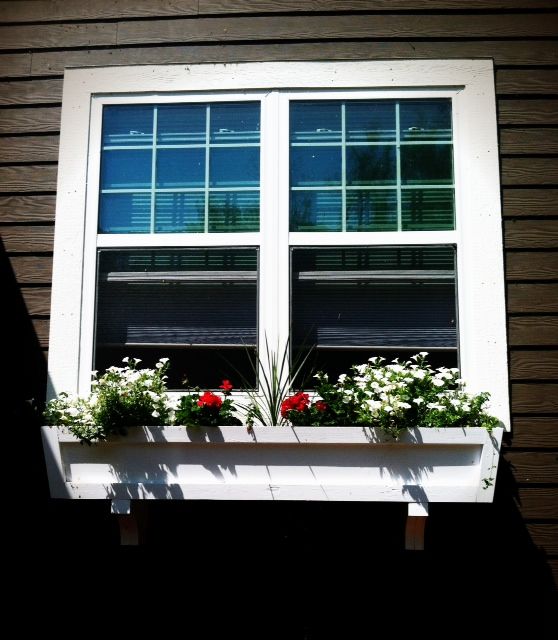
Crafting an oversized window box adds drama and visual interest to the exterior of your home, particularly if you have huge windows. Since this box is significantly larger than the standard version, you must consider its weight from the extra load of wood and dirt. has an intuitive guide for building an oversized window box using cedar wood, lag bolts, and caulk.
5. DIY extra-deep window box
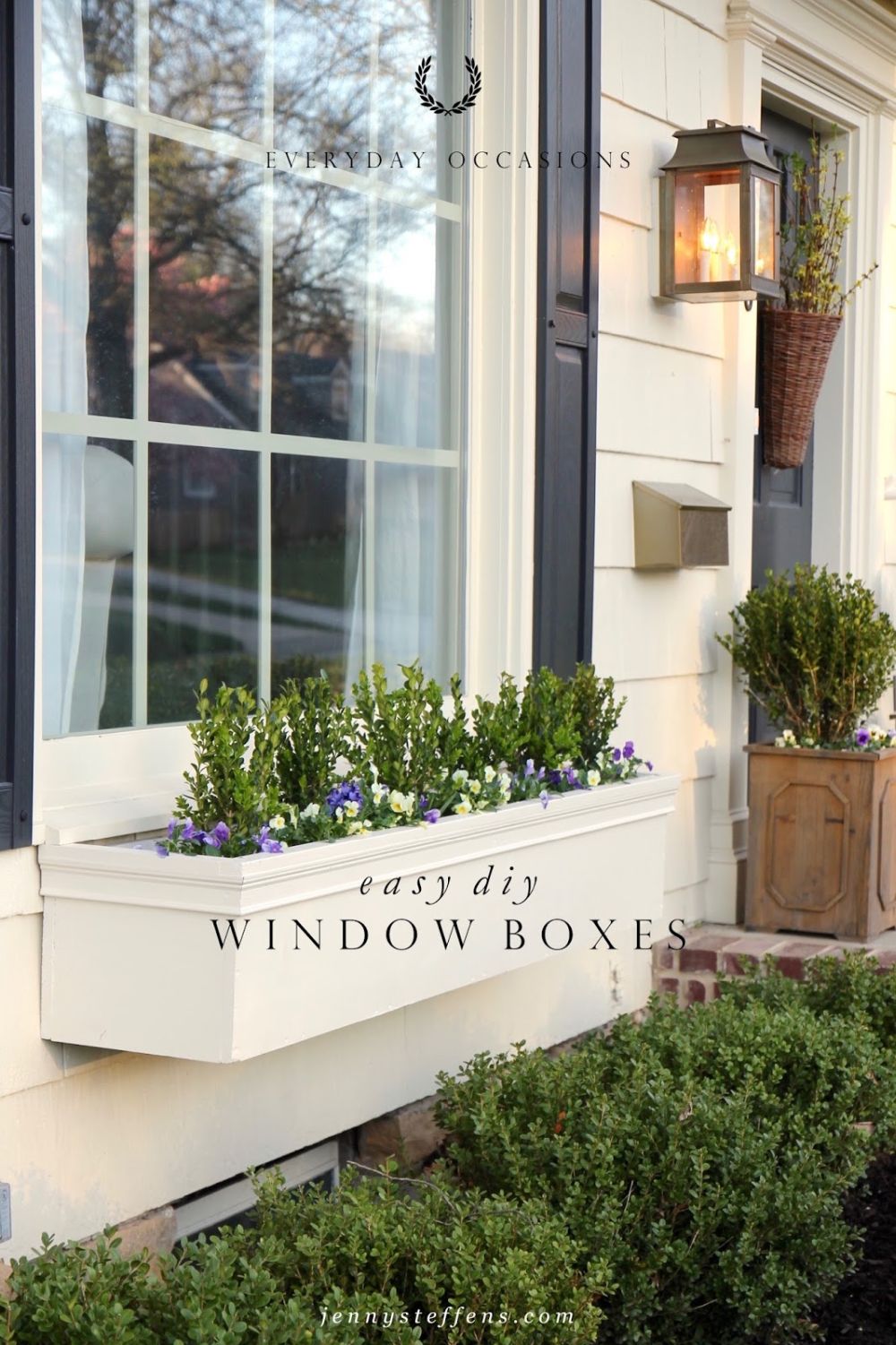
A handmade extra-deep window box is designed to fit below a window and provide ample space for plants to grow. It is deeper than traditional window boxes, allowing for more soil and root space. You can grow larger plants, such as herbs or small shrubs, o create a multi-tiered garden display.
Visit to learn how to build an extra-deep window box using pine boards, slates in the bottom for drainage, and plastic box liners for the lining. Add a trim molding, then prime and paint the window flower box to match your home.
6. DIY mahogany-stained window box

A handcrafted mahogany-stained window box is a beautiful addition to any home, thanks to the rich, warm color of the stain that brings out the natural beauty of the wood. Head to to learn how to build this window flower box using cedar boards, mahogany stain, and spar varnish. It is attached to the window using large screws.
7. DIY poplar board window box with black support brackets

This DIY window flower box is made of poplar boards and trim pieces, black support brackets, and wood glue. It would look fantastic under window shutters made from the same poplar boards and wood glue. Check out for more details.
8. DIY PVC board window box with pipe watering system
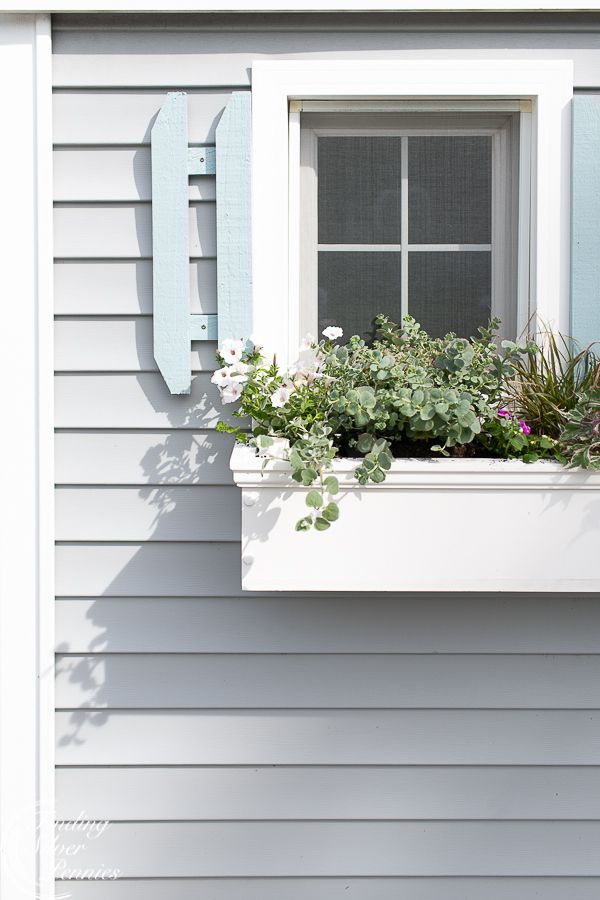
A PVC board window box with a pipe watering system is a modern, efficient, and cheap way to create a low-maintenance garden outside your windows. This DIY project involves using PVC boards to construct a rectangular planter box that can be attached outside your window. The bottom of the box is fitted with a PVC pipe watering system with holes and a rope, which allows you to evenly water all of your plants at once. Visit to learn more about this handcrafted project, which matches a coastal home.
9. DIY twig window box
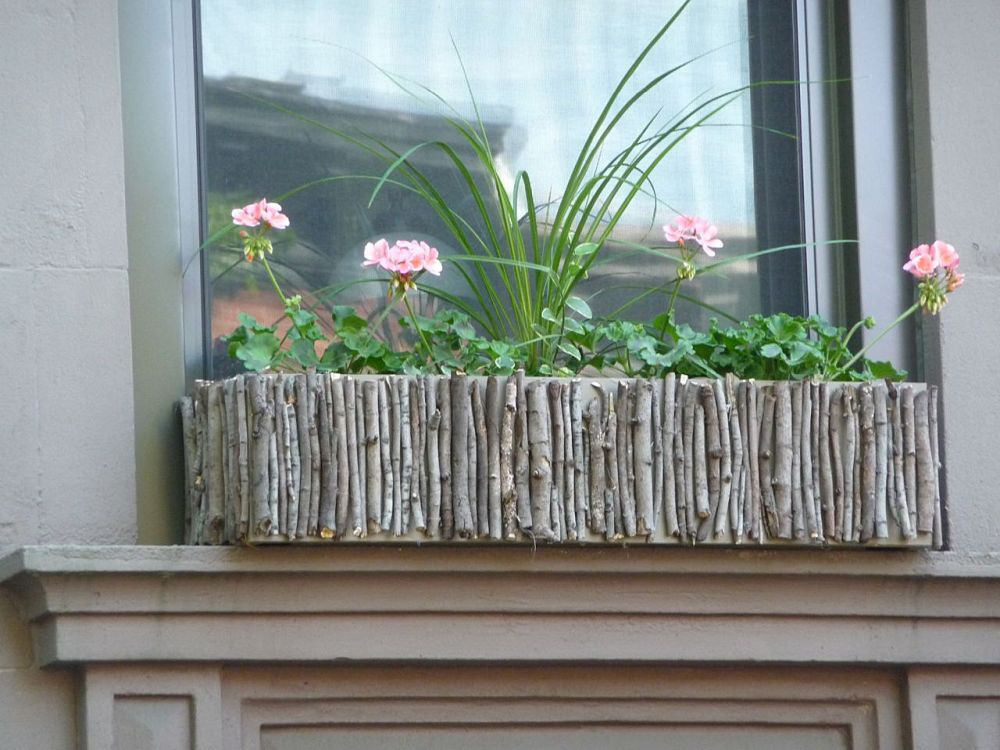
A twig window box evokes an earthy, organic feel for displaying flowers and plants, perfect for nature lovers. We stumbled upon this idea at . This window box is not entirely made out of twigs. Instead, it is made from plywood frames that were glued together; the twigs were later attached to the exterior of the box.
10. DIY lattice window flower box
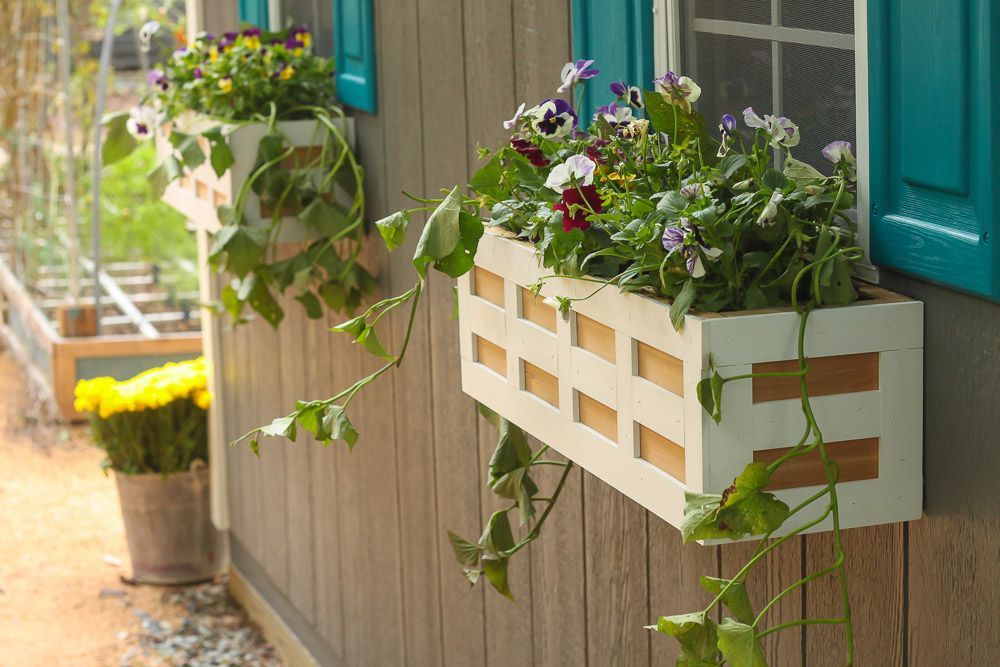
This handmade window flower box has an elegant lattice pattern consisting of intersecting lines that form a grid. The pattern creates visual interest and adds depth, and it is often used in planters, decorative wooden screens, jewelry boxes, picture frames, and wall art.
Go to to learn how to craft a window flower box with a lattice pattern using cedar planks, white vinyl strips, tape measure, wood glue, white window and door caulk, and weed block fabric to hold the potting soil.
11. DIY chevron window box
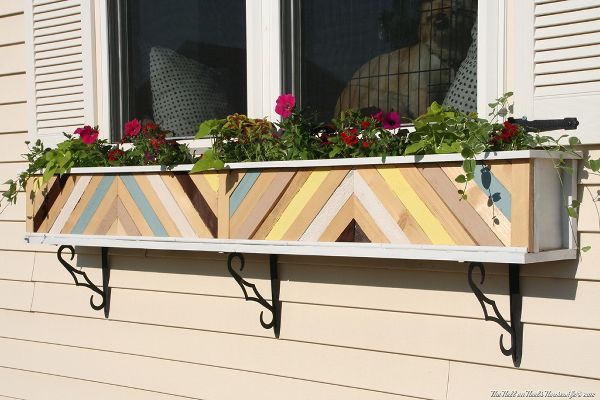
This window flower box design features a chevron pattern, a zigzagging design with a series of parallel lines that intersect at an angle to create a “V” shape. A chevron pattern is typically used in fashion, interior design, and graphic design. We stumbled upon this idea at . For this DIY project, you must build a standard window box, cut triangular pieces of wood, and sand down the edges of each piece to smooth out any rough spots. Next, lay out the pieces in a chevron pattern to ensure they fit together snugly and securely and attach them to one face of the box with wood glue.
12. DIY picket fence window flower box

This handmade window flower box is decorated with a picket fence to match the style of a house’s fencing, ideal for traditional or cottage-style homes. Check out the tutorial provided by to learn how to build this DIY window flower box using cedar fence planks, wood glue, and weather-proof stain. It is not the type of window box to fill with potting soil. Instead, use it to showcase flowerpots small enough to fit.
13. DIY pastel wood shim window box

A handcrafted pastel wood shim window box is a fantastic way to add color and personality to your windows. This DIY project involves using thin wooden shims, which are typically used for installing windows or doors and painting them in pastel colors. You must separately build a plain window box that you will later decorate with pastel shims. Check out for more details.
14. DIY walnut-stained wood shim window box
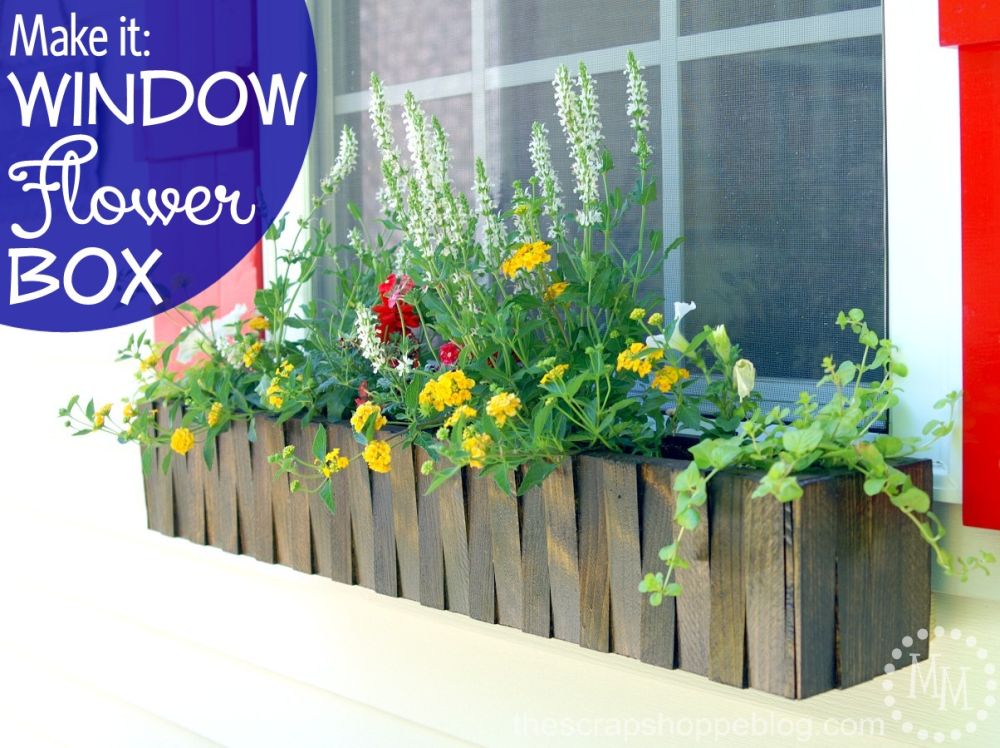
A handmade walnut-stained wood shim window box is a beautifully crafted planter box made from wooden shims stained with a rich, dark walnut hue. The box is designed to fit snugly underneath a windowsill, providing the perfect place to display your favorite flowers or herbs. The natural texture of the wood shims adds a rustic feel to the box, while the sleek finish gives it a modern touch. Go to to learn how to craft a walnut-stained window box with a vertical wood shim pattern; you just have to glue the shims to a rectangular wooden box.
15. DIY distressed window flower box with L brackets
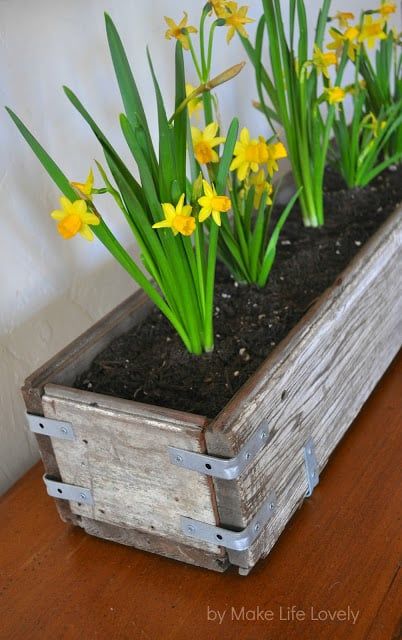
This handcrafted window flower box is made with old wood suffering from wear and tear, giving it a distinctive distressed look. It suits homeowners who prefer the aged, vintage, shabby chic, or farmhouse style. If you don’t have old wood, apply white paint to new wood blanks and use sandpaper to recreate the weathered appearance. The wooden planks are held together by L brackets and screws. Line the bottom of the window flower box with dried coconut husks to help absorb water. Head to for more details about this DIY project.
16. DIY hanging flower box with sisal rope

A handcrafted hanging flower box with sisal rope is a charming addition to an indoor space that loves the rustic, farmhouse, or bohemian aesthetic.
Visit to learn how to build a window flower box, caulk the inside seams with pure silicone caulk, apply a dark walnut stain, and hang the box by attaching sisal rope to screw hooks.
17. DIY window box with chalkboard labels

A window box with chalkboard labels is a functional addition to any home, ideal for housing a herb garden. You can write the name of each herb underneath with chalk. For this DIY project, you will need a simple wooden window box, whether you build it from scratch or repurpose an old object. has a simple tutorial that makes a window box out of a painted CD rack and attaches labels with a chalkboard print. However, you can apply chalkboard paint to unfinished wood tiles in order to create a dry-erase board.
18. DIY wine crate window box
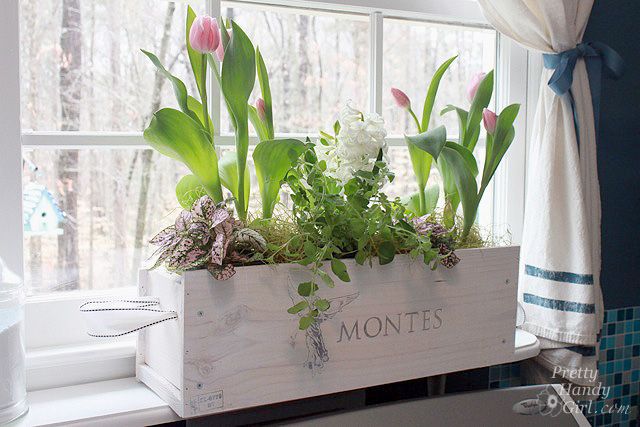
A handcrafted wine crate window box is a creative and eco-friendly way to repurpose an old wooden wine crate into a charming garden display. This DIY project involves a pulled-apart wooden wine crate as the base of a planter box. Stain or paint the crate to match your home’s exterior, or keep it in its natural state for a rustic look. Line it with heavy-duty plastic, add the potting mix and plants, then place the wine crate on your windowsill. To hang it outside your window, use hooks or brackets. Check out the guide from for more information, which creates a white-washed window box out of a wine crate.
19. DIY dresser drawer window box

This DIY window box is a unique and creative way to repurpose an antique dresser drawer. It involves removing the drawer front and attaching it to a standard window box. Apply a coat of paint, add weather-proof stain, and install wooden brackets to complete the project. Check out for more details.
20. DIY galvanized tub window box
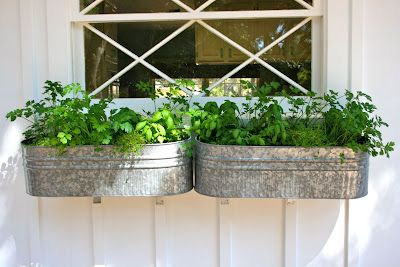
This DIY project proves that any container can be repurposed into a window flower box, even a galvanized tub. The metal is durable, and you don’t have to worry about the window box’s ability to withstand the elements. It has a vintage look suited for farmhouse or country-style homes but can also be incorporated into more modern designs for an eclectic look. We stumbled upon this idea at .
21. DIY aluminum gutter window box for succulents
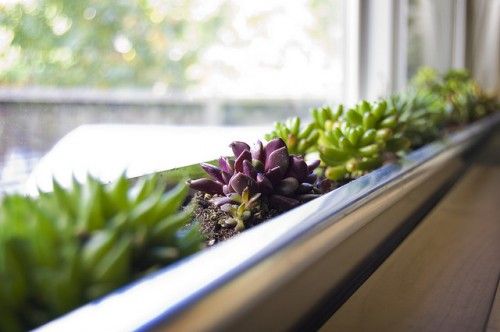
This creative project proposes a slim, indoor window box for succulents using an aluminum gutter. It has a minimal design. Visit to learn how to build this window flower box using an aluminum gutter, gutter caps, and silicone caulk. Mount the box to the windowsill using sheet metal screws. Consider adding removable liners to easily switch out the plants or clean the box as needed.
22. DIY tea tin herb garden
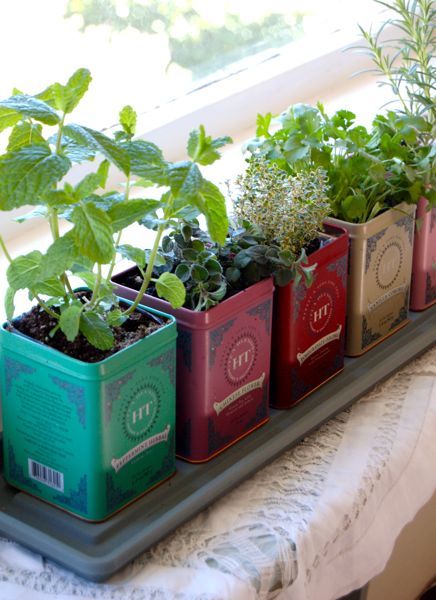
A DIY tea tin herb garden is an easy alternative to an indoor window box that turns old tea tins into tiny planters for herbs. It is a fantastic way to reuse beautiful tea tins. There is no actual crafting involved in this project besides drilling holes in the bottom of tea tins to create drainage. Then fill the tea tins with potting soil, add herbs, and neatly arrange them on a window box saucer on your windowsill. Check out for more details.
23. DIY raised pallet planter
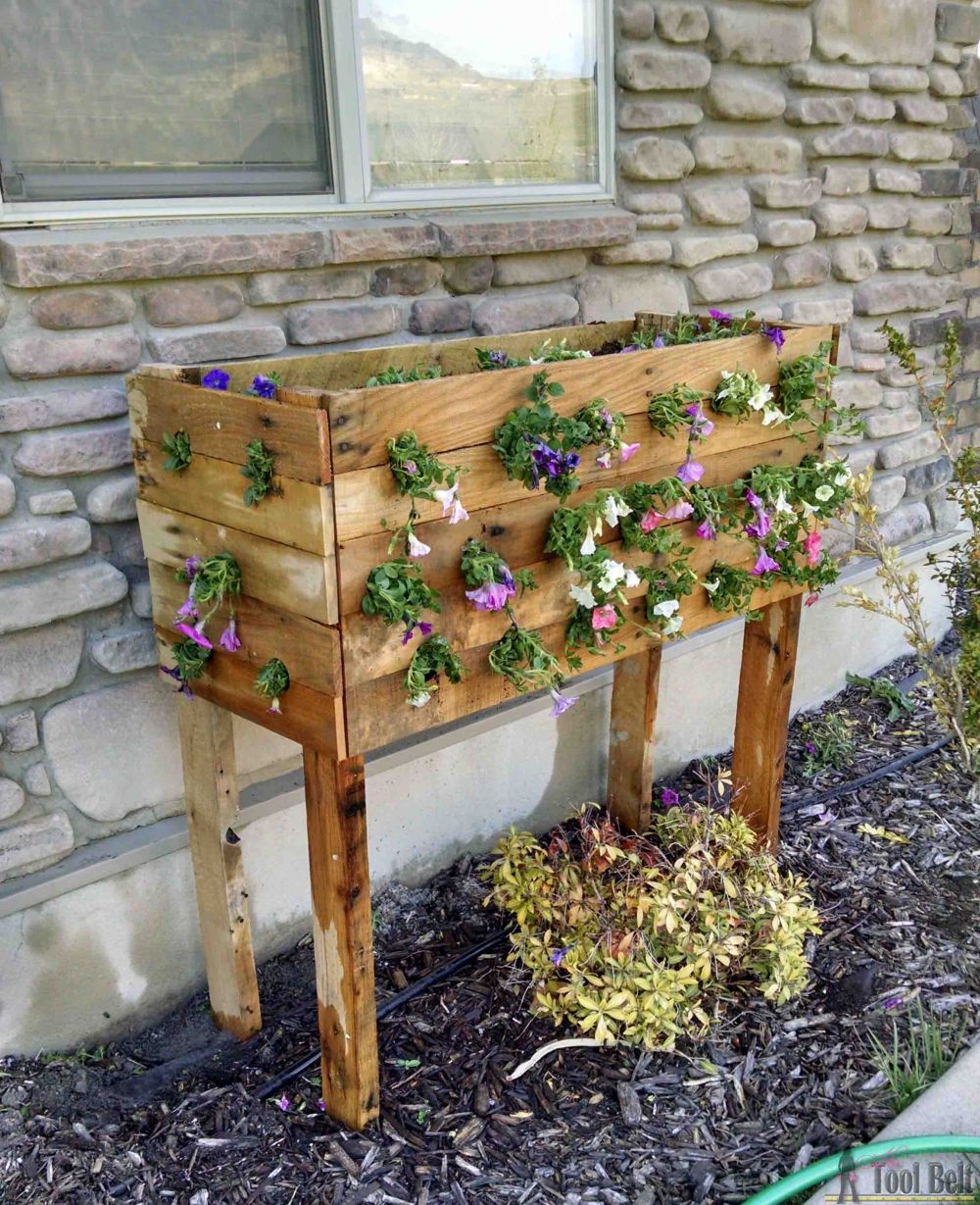
A handcrafted raised pallet planter is an excellent alternative to a window box if you are not yet ready to attach it to your house. You can repurpose old wooden pallets for this project, modifying them to create a box-like structure with open slats on the sides for drainage. Line the box with a weed guard before adding potting mix. Move the raised pallet beneath your window to resemble a window flower box. Check out for more details.
FAQs
Discover more useful information about window flower boxes.
What is the difference between a window flower box and a planter?
A window flower box and a planter are both used for displaying plants, but there are some key differences between the two. A window flower box is a long, narrow container designed to be mounted on the outside of a window. These boxes are typically made of wood or metal and can be attached to the window sill or hung from brackets. Window flower boxes are often used to add color and charm to the exterior of a home. On the other hand, a planter is a container that can be used indoors or outdoors to display plants. Planters come in a variety of shapes and sizes, from small pots to large troughs. They can be made of materials like clay, ceramic, plastic, or metal.
What are the benefits of a window flower box?
A window flower box has many advantages, both aesthetically and functionally. For example, it enhances curb appeal since a window box adds charm and character to any home. A well-maintained home with beautiful window boxes can increase its value and make it more appealing to potential buyers. Flowers often receive more sunlight than those planted directly in the ground, leading to better growth and overall health. If you have limited outdoor space, window boxes offer a way to enjoy gardening without occupying too much room. Elevated window boxes help keep pests away from your plants and reduce the risk of damage or infestation. You can grow herbs and even small vegetables in your window boxes, providing you with fresh ingredients at arm’s reach for cooking. Additionally, certain herbs are natural repellents for annoying critters, such as basil for flies and mosquitoes.
Do window boxes cause damage?
Yes, window boxes can potentially cause damage if not installed and maintained correctly. Poorly sealed window boxes may leak water or insecticides that seep into your walls and cause long-term structural damage. If a window box is too heavy and placed on an ill-prepared wall, the weight of the soil can put stress on it and eventually lead to a collapse. To prevent any damage, make sure to securely attach a window box to your house with proper fasteners, use quality liners that won’t rot or crack over time, and keep the weight of the filled soil within recommended limits.
Do window boxes add value to your home?
Yes, window boxes can add perceived value to your home and increase its curb appeal, but mostly to help with the presentation for potential buyers.
Should window boxes be bigger or smaller than a window?
Window boxes should typically be slightly bigger than the window so that they don’t look too small or out of proportion. A good rule of thumb is to make the window box about 2 inches wider than the window and no more than 4-5 inches longer for a vertical configuration.
What types of material should I use to make a DIY window box?
The best materials to use when creating a DIY window box are wood, fiberglass, metal, plastic, and vinyl. Wood is the most common material since it is easy to manipulate, provides a natural look, and can be painted or stained to match any aesthetic. Fiberglass is lightweight and durable. Metal window boxes come in various finishes like brass, copper, or stainless steel. Plastic window boxes offer both durability and affordability, while vinyl is an excellent option for an easy-care material that will not rot or rust.
What should I put in the bottom of my window box?
There are several ways to promote window box drainage. For example, drill holes in the bottom, incorporate a layer of landscape fabric, pea gravel or pebbles, install a self-watering system, or place a sprinkler directly underneath your window box.
How do I keep my window boxes from rotting?
To keep window boxes from rotting, use water-resistant materials like treated wood or plastic. Regularly check the plants and remove any dead or decayed foliage as quickly as possible. Additionally, avoid letting the soil become too wet by using a mulch or rock layer over it and draining any excess moisture away from the box.
Is there any regular maintenance necessary for my DIY window box?
Yes, regular maintenance is necessary to ensure your DIY window box stays in optimal condition. For wood, it should be treated periodically with a sealer or preservative to prevent weathering and water damage. Metal boxes should be checked for corrosion and repainted if needed. You should also make sure there are no loose screws or connections that need tightening. It’s a good idea to inspect the window box once every 6-12 months for any signs of damage or deterioration. Additionally, the plants inside should be checked frequently to ensure they’re healthy and have enough water and nutrients.
How many plants should be in a window box?
The number of plants to fit in a window box depends on the size, but typically no more than 5-6 small plants. They must have similar light and water needs to avoid competing for resources.
What are the best plants for window boxes?
The are trailing flowers like petunias and ivy, herbs like parsley and rosemary, or shrubs like boxwood and lavender.
What can I use instead of a window box?
There are many window box alternatives, such as wall-mounted planters, raised planters, deck railing planters, and balcony planters.
What’s the difference between window flower boxes and vertical gardens?
Window flower boxes and vertical gardens are both popular options for adding greenery and beauty to small spaces, but they differ in a few key ways. Window flower boxes are typically rectangular containers that are mounted on the outside of a window, filled with soil, and planted with flowers or other plants. They provide an attractive display from both the inside and outside of the building, and can be easily changed out seasonally or as desired. Vertical gardens, on the other hand, are designed to grow plants vertically rather than horizontally. They can take many forms, from simple wall-mounted planters to elaborate living walls made up of multiple layers of plants. often use hydroponic or other soil-free growing systems to maximize space and create striking visual displays.
Conclusion
Creating a window box is an excellent way to add style and creativity to your home. It’s also an easy and affordable project that anyone, regardless of skill level, can take on. With a few simple materials and the right plants for your climate and conditions, you will craft an eye-catching flower box in no time. Check out more .
The post appeared first on .





























